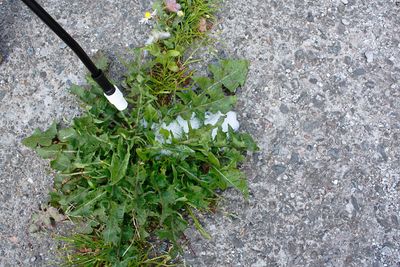How To Kill Shrubs With Roundup

The second option is to drill holes in the trunk and pour glyphosate.
How to kill shrubs with roundup. Some roundup products contain other herbicides to kill germinating seeds and roots. Lay down the mulch first though create a weed barrier that will prevent weeds and grasses from growing for up to 6 months by applying roundup landscape weed preventer around the tree. These products are clearly labeled. Roundup is absorbed by plants and circulated throughout the plants killing them down to the root.
Put on gloves and a breathing mask first as horticulture vinegar is strong and may irritate your lungs if breathed in especially in the large doses you ll need to kill bulkier bushes. And keep the ring several inches from the trunk. The first one is to apply adequate amount of roundup at the bark of the tree. Delaying the application of.
Then lay down a 2 to 3 inch deep ring of mulch any more could damage your tree s root system. Coat the entire stump surface with a 50 to 100 percent solution of roundup immediately after cutting. Because it enters through the green leafy parts of a plant roundup is only effective against plants that have broken the surface. Typically it directs to thoroughly spray all leaf surfaces to the point where herbicide begins to drip from the leaves.
It normally does become deactivated once it hits the soil because it binds tightly with soil particles. To kill stumps cut trees down as close to the soil as possible. The main ingredient in roundup weedkiller glyphosate is nonselective meaning that it kills any plant with which it comes in contact. Making sure no wind will carry the herbicide to nearby shrubs or other desirable vegetation avoids.
The first way is by foliar application. There are several ways to kill bushes with roundup whose active ingredient is glyphosate. Roundup will kill almost any plant and has been implicated in causing cancer related diseases in humans. Glyphosate is the active ingredient in roundup.
However it only works when the plant absorbs it and its. The invention of chemical pesticides has made that task easier but introduced a new hurdle to overcome finding something that keeps bugs away without damaging the health of unintended victims. Keeping pests from damaging crops challenges even the best farmers. You need to literally paint a thin smear of the concentrated product on the fresh cut.
It binds so tightly to soil that the soil essentially neutralizes it. You are not going to be using large amounts.



















